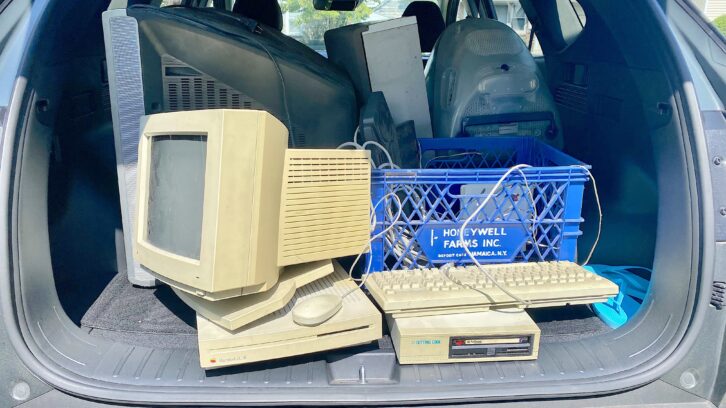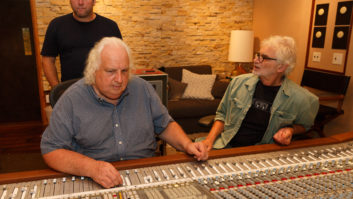
Our September issue is coming out right when I drive my daughter to college for the first time. For the last few months, we’ve been preparing for that momentous occasion by gathering an ever-growing pile of stuff for her fledgling flight out of the nest—and that mountain is starting to take over our basement. To wax lyrical about it, that mountain is a physical manifestation of mom and dad wanting to create as frictionless a transition for our child as possible, so that she can go on to achieve great things. It’s also mom and dad trying to clear some stuff out of the house.
Usually we’re good about finding new homes for old things; we hold garage sales, donate old clothes and so on, but inevitably some items stick around too long—generally they’re mine, and specifically, they’re always old technology.
With that in mind, I recently hauled a ton of old tech to an “e-cycling” event at the town dump. It was bittersweet to see it all go—there was the dead iMac DV-SE I drove into New York City to buy at the late, great Tekserve. There was the Yamaha DD-6 drum machine my dad found sticking out of a snow bank one day; it worked when he dried it off, so he gave it to me. There was the TV we had to buy when we were dead broke; the previous one died a week after the kid was born so we didn’t have the money to spend, but we also knew we weren’t going out in the evenings anymore. Now that kid is off to college.
All that stuff was worth basically nothing, but I still found it hard to get rid of. Technology is encased in metal and hard plastics, built to last because it’s sold by promising you the future, and that it will help take you there—so it’s always a slow-dawning shock to realize that the future has come and gone.
Driving back from the dump, however, I realized that I wasn’t reminiscing about the technology itself so much as stories about it. Technology is about information, but stories are about feelings, and the real heart of any story, told in a tour bus lounge or while setting up a studio session or anyplace else, is the underlying message of This is how I felt. The technology I dumped didn’t last, but the stories of how I felt when I got it—incredulous that a drum machine was in a snow drift or despondent that I had to buy a TV—did. How we feel and how we make others feel? That’s the stuff of stories.
Let me tell you a story about Tony Bennett, who died in July at the age of 96. Back in 2006, I went to Madison Square Garden one boiling hot afternoon to interview the audio team on a Tim McGraw/Faith Hill tour. I checked in with security at the employee entrance on 8th Avenue and then waited for the tour to send down a pass for me.
While I waited, in walked Tony Bennett, dressed in a sharp suit despite the heat; he checked in and then waited for someone to escort him up—it turned out he was there to sit in on a song that night during the show. Since we were in New York City, everyone in the foyer did the Professional New Yorker thing and totally ignored the VIP in our midst.
However, with nobody watching him and no need to be his cheery public persona…Bennett simply was that friendly guy. A janitor, grungy head-to-toe, walked up to him and said, “Hey man, I saw you in the Sixties at….” Most acts in that situation would give him a frosty “Thanks” at best—their turn to be the Professional New Yorker—but instead, Bennett asked him a question and they spent the next 10 minutes talking about the Yankees, the heat, you name it, like they were old pals. No looking down his nose at this janitor, no false charm, and no need to give him the time of day if he didn’t want to; Bennett just talked with him, because why not? Eventually someone whisked Bennett away, but he shook the janitor’s hand before he split.
While I kept waiting for my pass to show up, the janitor quietly swept up the foyer just beaming, grinning ear-to-ear. I remember it all these years later because I saw how Bennett made the guy feel—and how watching that made me feel.
The future, it comes and goes. People we meet, famous like Tony Bennett or not, they come and go. The stuff I’ll be lugging into my daughter’s dorm while you read this, that’ll come and go, too. I can’t give my kid the world, just a few things to get her started, but that’s not what matters anyway. As she begins her own journey full of ecstatic highs and heartbreaking lows, the most important thing I can give her is the advice to remember how it all feels and be aware of how she makes other people feel, because that’s the only part that endures—that’s the stuff of stories.





